Preface
Born in Peshawar, and brought up in North India, I had seen very few South Indians during my childhood. And the only Christians we saw were either Anglo-Indians or teachers in the elite schools. All this changed, when I joined the NDA, in Jan 1958. I met Thomas, and I got to know all that I know on these issues, now.
Last week, Brig Surinder posted his Kerala travelogue on this blog, and it has generated a lot of interest. Purely from the military point of view, Kerala is a very important state. In terms of area and population, it is a small state. Of the five major south Indian states, Kerala has only about 13 % of the population, and yet, over 40% of our military pensioners reside in this tiny region. It is also a well-known fact that a very large number of Malayalis have shifted out of their home state.
I requested Thomas to do a bit of research on Kerala and its people. The end result of his labour of love is given below. It has been laid out in such a manner that you can get a gist of his findings within five or seven minutes. And if you wish to go into the details of any specific topic, you can click on the link and get all the information which you need. Kerala is a unique region. Its villages are like mini-towns and the cities are not as large as the metropolitan conglomerates in the other cities.
As a child, I was told that Islam was forced on the Indians by the Muslim invaders and Christianity was brought by the British rulers. It came to me as a complete surprise, when I learnt that Christianity in South India came before it reached Britain!
Now, over to Thomas. His roots are in Kerala, but he lives in Bengaluru and all his children have migrated to the USA. In due course of time, his offspring may not even be able to understand their ‘mother-tongue’!
*
Geography and history have conspired to make Kerala distinctive.
By Wg Cdr Joseph Thomas, VM
According to legend, Lord Parasuram threw his axe into the sea which receded and created Kerala and Konkan.

Kerala is blessed with rich soil, a tropical climate and plenty of rainfall. It, therefore, attracted raiders and migrants from the arid region of Madurai. They established the independent kingdom of Travancore. Migrants from the north settled and took over the region from Gokar-nam to Kasargode. In recent centuries there were three regions — Travancore and Kochi kingdoms and Malabar. The last was ceded by Tipu Sultan to the British who merged it with the Madras Presidency. The present state of Kerala was formed on 01 Nov 1956 as a result of states re-organisation.
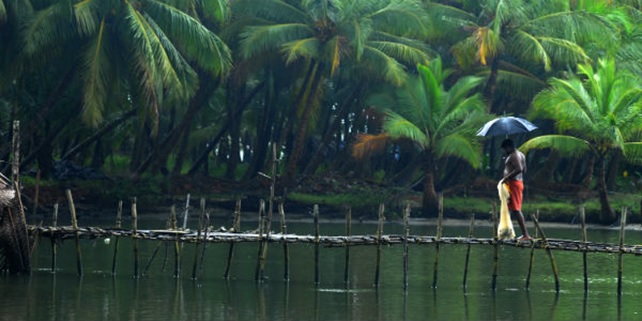
Monsoon in Kerala
Kerala has been a prominent spice exporter since 3000 BCE. By the time pepper was transported to Europe and sold in retail, it was worth its weight in gold. It went by the sea route upto Egypt, then overland and again by sea. Opening up of the sea route in the late 15th century increased the spice trade and brought more Europeans to India.

Spices Trade Routes in Ancient Times
Spices of Kerala
https://youtu.be/VvSCZt5cMCI
Kerala was never ruled by any of the empires of North India, be it the Mauryas, the Guptas or the Mughals. Even the Marathas who ruled up to Madurai never came to Kerala. And the British were allies, not rulers.
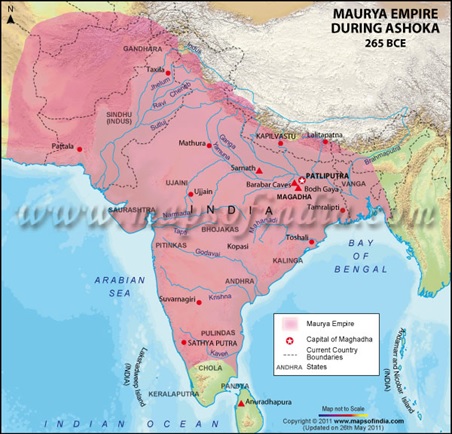
Nevertheless, Kerala has always been culturally in the Indian mainstream. And it was Shankaracharya of Kerala who is credited with unifying and establishing the main currents of thought in Hinduism. He travelled across the Indian subcontinent on foot to propagate his philosophy through discourses and debates with other thinkers. India was a Buddhist country for about 1000 years and it was from Kerala that Hinduism spread outwards, replacing Buddhism. Shankaracharya is credited with establishing, or expanding, the four dhams of Badrinath, Dwarka, Puri and Rameshwaram. Even today the head priest of Badrinath is traditionally a Nambudiri Brahmin from Kerala.

Char Dham Ka Darshan
Today Kerala has three main religions – Hinduism, Islam and Christianity. Unlike other parts of India, all three communities are of roughly equal numbers and influence. All three communities live in harmony. Christianity has extremely ancient roots in Kerala, being introduced by St Thomas, one of the 12 apostles of Christ.
Kerala has always been a seat of learning. A school that flourished in the 14th-16th centuries was the Kerala School of astronomy and mathematics, founded by Madhava of Sangamagrama. His followers included Nilakantha Somayaji, Jyesthadeva and Sankara Variyar. In attempting to solve astronomical problems, the Kerala School independently created a number of important mathematics concepts. The fundamental elements of calculus including numerical integration methods and infinite series derivations for pi and for trigonometric functions such as sin x, cos x and tan-1 x (the so-called Gregory series) were all discovered.
Recently, there has been some acknowledgement of these facts outside India.
See for e.g. BBC – History of Indian Mathematics Part-2 of 2. (From 2:53 onwards, it is mainly about the Kerala School of Mathematics.)
History Of The Kerala School Of Mathematics
Modern education came to Kerala much before the rest of India. The rajas were benevolent and far sighted. Girls’ education, which is key to literacy, was encouraged by them. As a result, Kerala continues to have the highest literacy rate in India. A fallout of this is that Kerala has long had a balanced gender ratio.
Kerala was mainly an agricultural region. The global depression of the 1930s caused deflation and great distress. That was the start of the diaspora which continues till today. Also, the growth of Communism forced many families to migrate. Today, the metro cities of Mumbai, Delhi, Chennai and Bangalore each have a greater population of Malayalis than Thiruvananthapuram.
A counter current of migration is a recent phenomenon. Today 10 % of the population consists of migrants from Nepal and Bihar.
Kerala has jumped from agriculture to a service economy, more or less bypassing the industrial age. There are, however, pockets of industry like ship building at Kochi. Here is an example of combining the ancient with the modern :
Synthite – the world’s largest producer of value added spices.
In Kerala, each family lives on their own land. Thus, unlike in the rest of India, there are no crowded villages. Instead there is a vast semi-urban area. This may also be the reason why Malayalis are not servile. They do not treat their employers or bosses as demi-gods.
The oldest battalion of the Indian Army is 9 Madras. Raised as personal bodyguards to the Maharaja of Travancore in 1704, it grew into the “Nair Pattalam” (Nair Army). They defeated a Dutch invading force at Colachal in July 1741. Capt Eustachius De Lannoy, the Dutch commander, surrendered and joined the Travancore Army. From 1741 to 1758, Capt De Lannoy was in command of the Travancore Forces and led the northward expansion of the kingdom.

De Lannoy’s Surrender at the Battle of Colachel
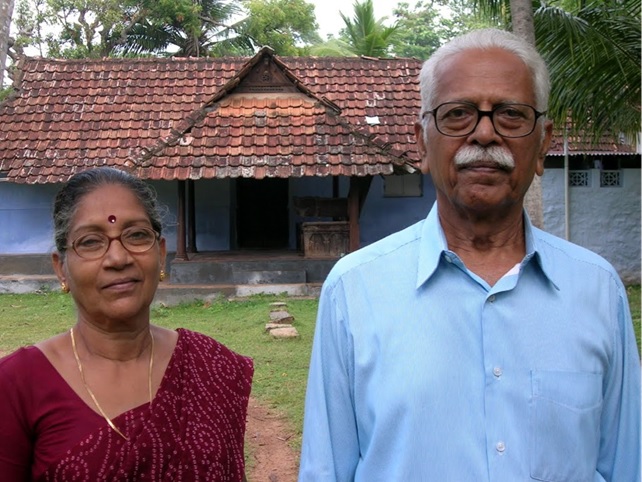
On capture, Capt De Lannoy was initially detained in this house belonging to Ayyappa Marthanda Pilla, commander of the Nair Pattalam. Pic shows one of his direct descendants, Wg Cdr (Retd) K T Sudhir & Mrs Sudha Sudhir.
Commemorating the victory of Maharaja Marthanda Varma over the Dutch at the battle of Colachel, after which the Dutch never came to India.
Sub-titles tell the story of the Battle of Colachel
Colachel Natural Harbour and the Victory Pillar, Kanyakumari
The “Nair Army” became incorporated into the Indian Army in April 1951. 9 Madras has the rare distinction of never being disbanded, retaining their identity throughout.
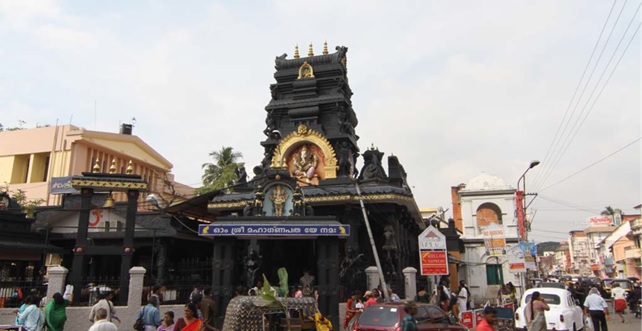
The Pazhavangadi Maha Ganapathy temple is situated in the heart of Thiruvananthapuram city. The main deity of the temple is Sri Mahaganapathy (Ganesha). The original Idol was maintained by the Nair Pattalam at Padmanabhapuram. On shifting to Thiruvananthapuram in 1795 they established the current temple. Following integration of the Travancore army with the Indian Army in 1951, the temple is maintained by the Madras Regiment.
Video story on Pazhavangadi Ganapathi Kshethram. (Sorry, no sub titles in English)
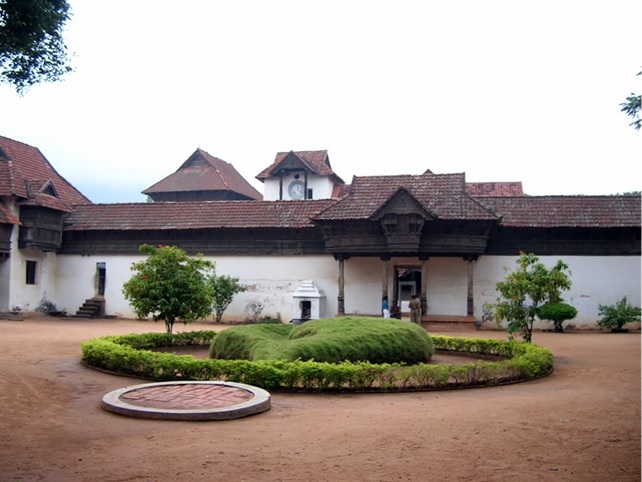
The palace at Padmanabhapuram, now in Tamil Nad
King Marthanda Varma dedicated the kingdom to his family deity Sree Padmanabha, a form of Lord Vishnu and ruled the kingdom as Padmanabha dasa or servant of Lord Padmanabha. Hence the name Padmanabhapuram or City of Lord Padmanabha. In 1795 the capital was shifted to Thiruvananthapuram. The palace complex continues to be one of the best examples of traditional Kerala architecture. Though now in Tamil Nad, it remains under the ownership and control of the Kerala government.
Sree Padmanabhaswami Temple and Travancore History
Not everything is hunky-dory in Kerala. It is a leader in hartals, consumption of liquor, road accidents and divorces. An all too common family story in Kerala goes like this :
Man gets job in the Gulf, gets married and has two adorable children. Mom and children stay back in Kerala for their education. Son is pampered and gets motorbike as a teenager. Son is killed in a road accident. Mom has morose look for the rest of her life.
Back to happier things: Onam is the most important festival of Kerala. It is a harvest festival and is celebrated with joy and enthusiasm all over the state by people of all communities. According to popular legend, the festival is celebrated to welcome the good King Mahabali, whose spirit visits Kerala at the time of Onam.
Onam – Nehru Trophy Boat Race | Aerial (Drone) Video
More videos :
Introduction to Coastal Kerala
Devushkas Visit Kerala
Thekkady
Munnar Parts I & II
Angry Elephants
A Jungle Resort on the Kerala – Tamil Nad Border
Athirappilly Falls is situated in Thrissur district of Kerala. Located on Chalakudy river this 24-metre (80 ft) waterfall and the nearby Vazhachal Falls are popular tourist destinations.
Kochi — Queen of the Arabian Sea
Kalaripayattu Kerala Martial Artform
Kalaripayattu Hand-to-hand Combat.
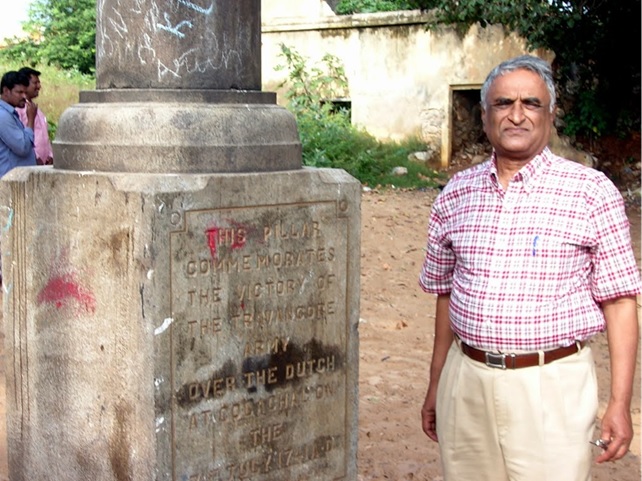
Author at the victory pillar at Colachel. In the background are the ruins of a courthouse and jail.
The Tailpiece
It does not take a very long time for a culture to change. Twenty or thirty years is a period long enough for things to change.
I was in West Bengal during 1971-72. I saw the Naxal movement transform the State from an Industrial hub of the country to a communist regime. During the same period, the refugee influx from East Pakistan caused havoc. Within ten years, all the Industrial houses shifted their corporate offices from Calcutta. And that flourishing capital of the British Empire turned the glorious town into an outsized slum.
Kerala was the only other state in India to be affected by this ideologue. As of now, there is no major industry operating in Kerala. In one of his mails, Thomas summed it up in just one sentence:
“Kerala is a nice place to visit,…but I would not like to ‘live’ there!”

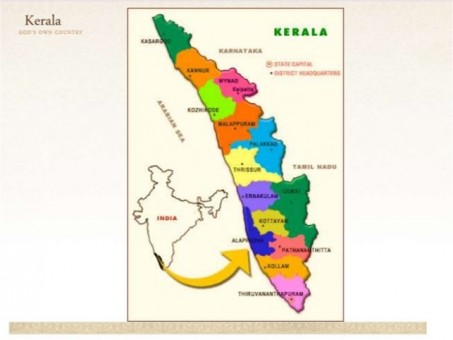














How is the great Egyptian Pharaoh Ramesses II connected to present-day Kerala?
A small stretch of land, in a sleepy town in Kerala hides secrets to a past when this was an international trading hub. Go to the small town of Kodungallur in Kerala, where the Pattanam archaeological site is today, and … Read More at https://www.livehistoryindia.com/history-of-india-2000-years/2020/03/14/kerala-at-the-crossroads-of-the-world-13th-bce-2nd-ce?fbclid=IwAR0rRdBBM8eDorYxk1QK1T9-X43jDTc2cLbqlDbzoH8OoL-HlsZf9X3gy7o
Sir, My brother sent me your article, What Makes Kerala Distinctive? It makes very interesting reading. Thank you,
Kannan
. As for Kerala ,i have served in Kerala in 1986 and have travelled quite extensively in Kerala is sure Gods own country n very distinctive culture n life style.
Whenever i returned to Trivandrum from outstation duty, felt as if i am coming home. It is one place where, urban n rural have been integrated . A keralite is very smart but works best when outside Kerala because the unions r forever calling for strike .
I must close now but i have lot to add. Because of my fondness for Kerala n good friends, have made several visits post retirement.lastly, one of my friends wanted me to settle down there, when i pointed out that i dont know the language nor can i afford the high cost of land.The friend replied that he will give land n no need to learn the language, just become a Godman because whatever u gesture, half will come true
Dushyant Singh
The Kerala write up was superb. I had spent 3 yrs at TTU n though travelled a lot across the state but reading and watching the videos I realise I saw a minuscule part and an urge arises to visit again.
One place needs mention here is Dhow manufacturing unit in Kozhicode who export big Dhows to Middle East even now. The specialty is no metal whatsoever is used yet these special Dhows stand up to vagaries of high seas. I was told they can make only one Dhow each year.
The craft is losing the sheen as younger generation is not keen to pursue the craft. On the contrary I think it should be given a fillip.
Birdy
Welcome, friends, to Kerala, God’s Own Country.
Here, you can sip coconut (plucked by our wiry-legged, bronze-chested Kuttappans and Kochu Thomas) juice or dig into a plate of karimeen pollichathu on the wind-swept deck of a houseboat in Kumarakom. Or you can go on a forest safari to Thekkady.
If you don’t get a fresh Malayali tiger sighting, we guarantee you a fresh Malayali tiger dropping sighting.
We also offer you many other sightings:
Our YWCA women in their kota saris and their weekly games of rummy. Our Marthoma achens on their Bajaj scooters with their cassocks billowing behind them like capes. Our nasrani achayens with their scotch whiskey and their waxy moustaches.Our gelf returnees with suitcases full of foreign scents.
Our men are hairy and so are our women. We believe in equality, a what’s-yours-is-mine policy, including your wife’s Tata Estate, rubber estate and the three gold teeth in her mouth.
To see our men in form, attend a Malayali wedding. When they’re sober, they’ll discuss the stock market, insurgency in Pakistan and global oil prices. Two Johnny Walkers down, they’ll hitch up their lungis (Jockey Bermudas peeking from beneath) and break into inebriated renditions of ‘Lajjavathiye, Ninte Kallakkadakkannill.’
To see our women in form, attend a Syrian Christian church service on Sunday and watch the Mariammas, Eliyammas and Shoshammas in the front pew belch out verse after verse of Suriyani hymns – lusty, off-key and hitting notes that will make the Mar Baselios Bavas turn in their graves.
And what about our superstars? Can your Tom Croose or Brad Peet vanquish a dozen gun-toting villains with a single, gold-ringed knuckle punch like Mohanlal or spew English like Suresh Gopi (‘Just remember that’) or own a courtroom like Mammooty (‘That’s all, Your Honor’)?
But all in all, we are a simble, humble people with simble, humble pleasures: watching Idea Star Singer on Asianet, scouting the obituary section of Malayala Manorama, getting our dentures stuck in plates of chakka velayachathu, ogling next door Kalyani’s size 38″ breasts, finding bridegrooms for our daughters (must be minimum an ingineer), going for second show and hooting when the power fails.
And why are we the way we are? Simblee. Coz we are Malayalee. We are like this wonley.
Dear Surjit,
Two very interesting, illustrative and exhaustive articles
providing enough motivation to the reader to explore Kerala further.
Thanks for sharing.
Regards,
Surendra
Sir,
Beauty lies in the eyes of the beholder!
Surjit
Photos of Kerala 90 years ago http://imgur.com/a/oR69N
Dear Surjit Sir,
Kerala is a beautiful state. The relevant facets have been well brought out in the post.I happen to visit Kerala in 1993 while I was posted in Bangalore, Even Keralites have gone out of the state in gulf countries and other parts of of India to earn. My view is that people are intelligent educated so they are absorbed outside the state. Kerala may be considered as state providing personnel for services.
People from outside the state may not like to settle there, but would like to visit & stay there for a short duration.
The post was well appreciated by my NDA Course from Kerala V V Nair mate who read the article. The post was received by him through source
With fond regards.
Lt Col B B Ghai (Retired)